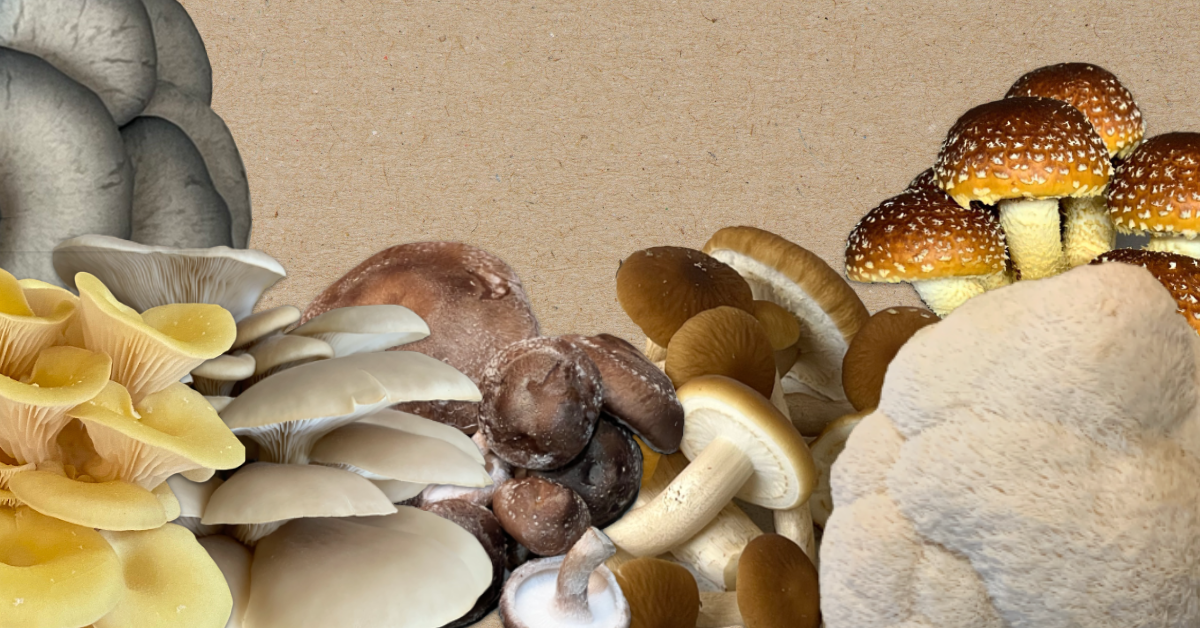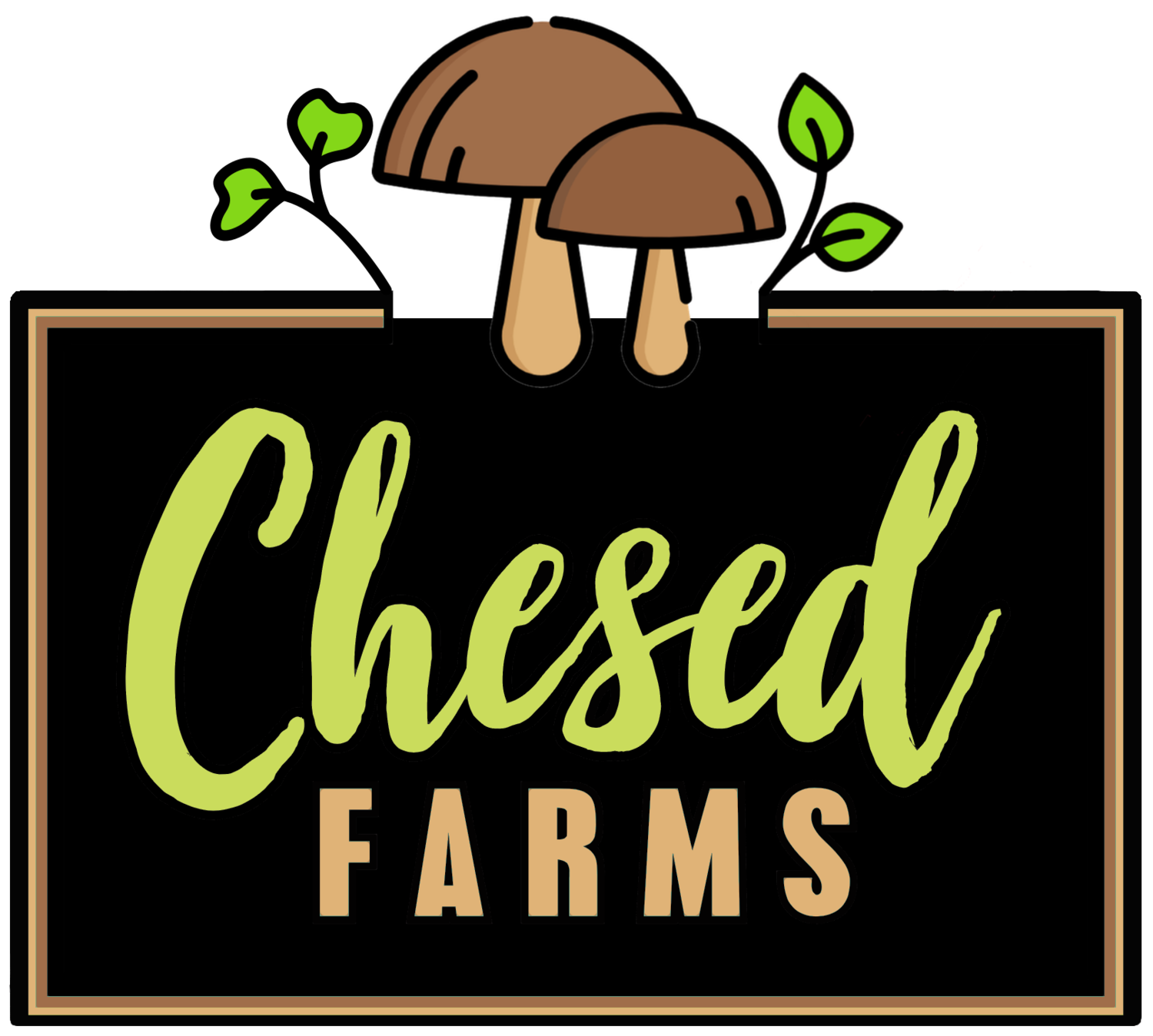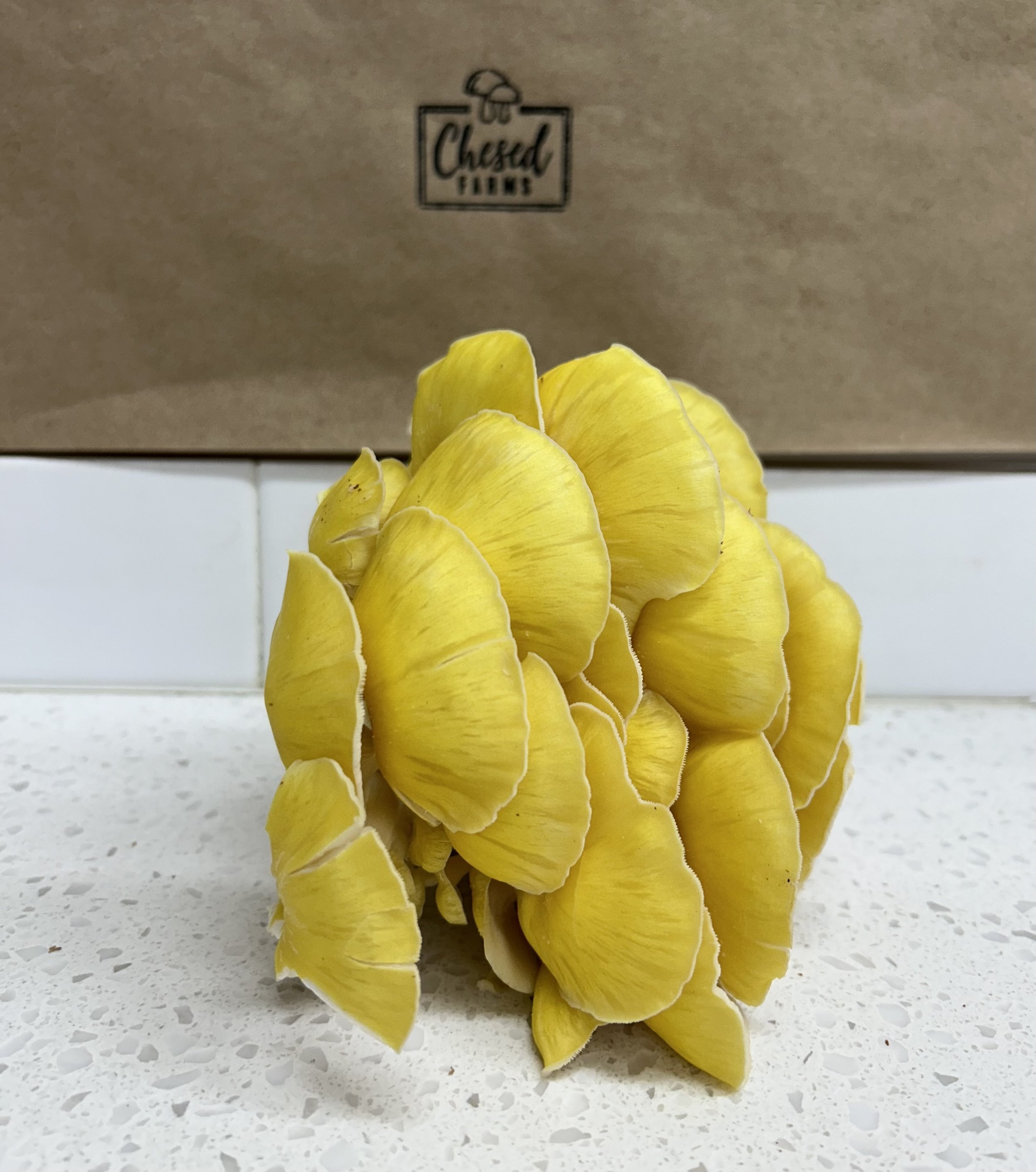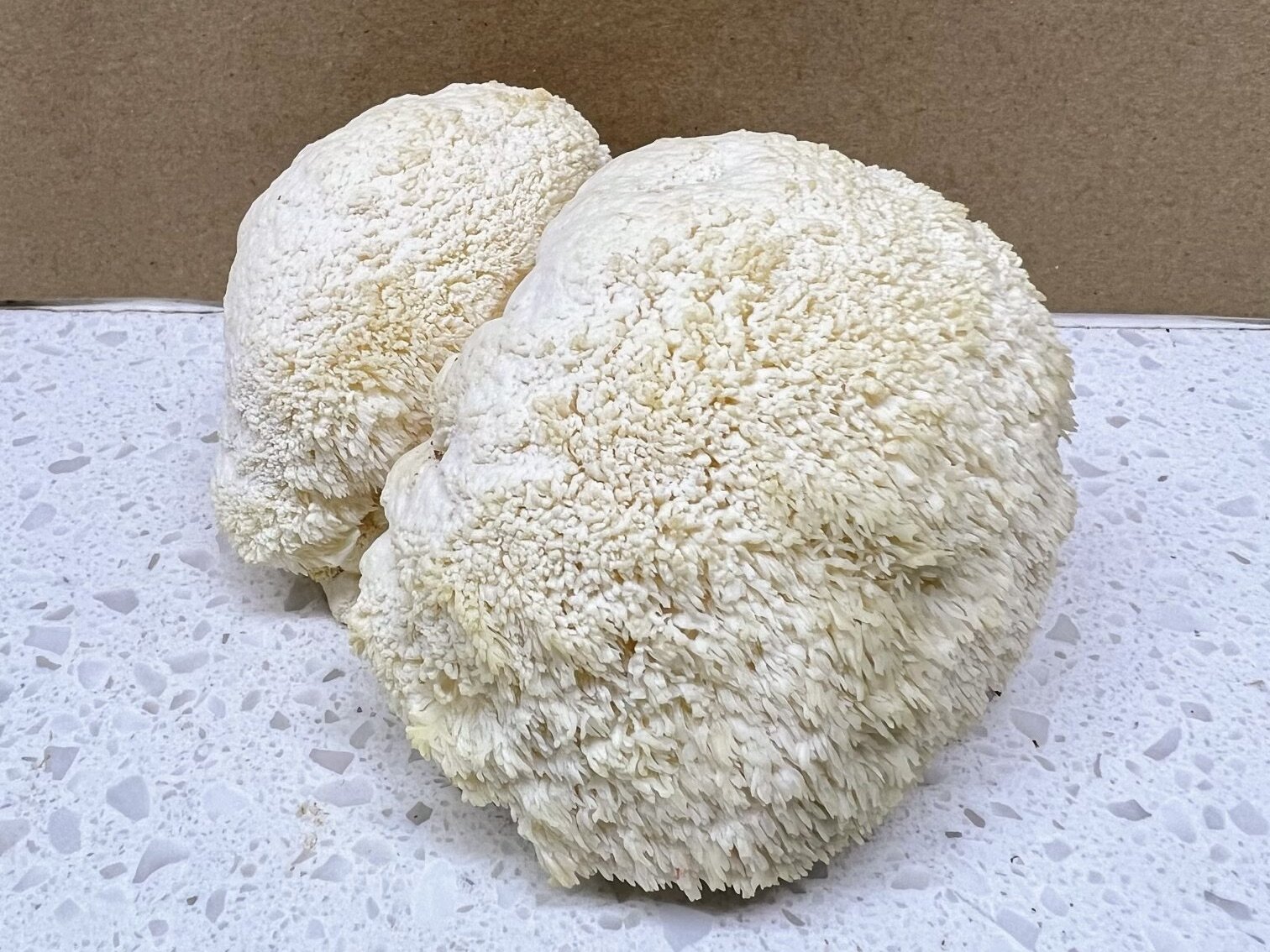
Mushrooms
Our Mushrooms
Collaborators
In October of 2024, Chesed Farms launched our most recent initiative: Choice Mushrooms ~ of the Cascades. With this exciting initiative came the opportunity to collaborate with some of our mushroom growing friends. This collaboration is a result of our desire to continue to grow relationships. Here at Chesed Farms, we want to share the mushroom love by working with our mushroom friends in the region to create more delicious mushroom options for you. We would like to introduce you to our collaborators:
Columbia Mushroom Company: Columbia Mushroom Company began in a small greenhouse in the corner of Brent Neil’s living room. At the time, he was pursuing a career growing liquid yeast for the brewing industry. He took up mushroom growing as a project similar to growing yeast, but with direct and delicious results. The excitement about mushrooms grew, and soon the space did too, moving to a room-within-a-room that we built ourselves. Upon moving onto our new property last year, we have been able to comfortably expand the farm and quadruple production. The growth of Columbia Mushroom Company has been wonderfully dynamic, as the industry of cultivating exotic mushrooms is still in its infancy. Columbia Mushroom Company cares deeply about our people. Our community has been essential to us from the very beginning, and continues to be as we grow.
What are Mushrooms?
Mushrooms are not a plant or an animal.
Mushrooms are part of the Fungi Kingdom of life that also includes yeasts and molds.
Someone in the mushroom growing community once asked the group, “Does anyone else feel like we are running a bed & breakfast for an alien life form?” That questions resonated with us in a delightful and humorous way. Much of our operation is similar to manufacturing, keeping the process going to keep those mushrooms coming. Because mushrooms are living creatures, we are creating and maintaining environments that support their growth and multiplication. Making sure the temperature and humidity are at the optimal conditions, and finding their favorite food so they grow quickly, beautifully, and abundantly.
Growing process at Chesed Farms
First Stage
The mycelium grow in a sterilized jar of sugar water. This is known as liquid culture. We source liquid cultures from a few producers that specialize in making liquid cultures. We also make our own liquid cultures from the mushrooms we are growing. That happens by taking a needle biopsy of a mature mushroom, and inserting the sample into the jar of sugar water. In a few days, new mycelium grows from the sample.
Second Stage
A small syringe of the mycelium in the liquid culture is added to a container of sterilized red-berry wheat grain. This is known as inoculation. The small amount of mycelium begins to eat the grain and expand throughout the container. In about 10 days, the entire container of grain is covered in mycelium.
Third Stage
Five-pound bags of wet oak saw dust and soy hulls are prepared and pasteurized. The inoculated grains are broken up and added to each bag of substrate, and the bags are sealed. The sealed bags are placed in the incubation room. This room is kept at 76º F. In nature this would be the stage where the creature is underground. Here the mycelium begins to eat the substrate, and colonize the entire bag. The time it takes depends on the species. In general, oyster varieties take about 30 days, other varieties we raise take 45, expect Shiitake, which takes 110 days.
Fourth Stage
At the point where the mycelium has consumed all the substrate in the bag, it is ready to form mushrooms. The mushroom is grown to send the next generation out into the world to look for more food. This is done by releasing spores. Which in our process, we are not utilizing. So, when the creature is ready to make the mushroom, we move the bag into the fruiting room. This room is kept in the low 60’s and a relative humidity of 90%. A cut is made in each bag, and the mushroom grows neatly (most of the time :) from that cut. In about 5-7 days, the mushroom is ready for harvest.
Mushroom Health Benefits
General Information
There are many health benefits to including mushroom in your diet. First we will cover the overall benefits of mushrooms in general. According to an article on WebMD, mushrooms are a low-calorie food that contains many vitamins, minerals, and antioxidants.
Mushrooms are rich in potassium, which can lower blood pressure.
Mushrooms have anti-inflammatory effects that improve immune system efficiency.
As a great substitute, or argument to meat, mushrooms can benefit weight loss.
Mushrooms are also a great source for: Selenium, Copper, Thiamin, Magnesium, and Phosphorous.
General Mushroom Information
Storing Mushrooms
Fresh mushrooms last longest by keeping them in a brown paper bag, and in the refrigerator. On average, mushrooms will keep for around five days in this manner. Over time the mushroom will start to dry out, possibly crack or darken in color. Many of the mushrooms, especially oysters and chestnut mushrooms will begin to grow mycelium. The mycelium grows from the base of the stems, and on the caps of the oyster mushrooms. The mycelium will be a white fuzz. These Mushrooms with these charactreistics are likely still good to eat.
You will know the mushroom is not good to eat if you smell an odd smell, they become slimy, or see green, brown, or black fuzz (mold).
You can extend the shelf life of your mushrooms by sautéing them, then storing them in the refrigerator or freezer until you are ready to eat them. Drying them out in the oven, or a dehydrator can allow you to store them for months.
Preparing mushrooms
Mushrooms do not need to be washed before cooking. Washing in water can make the mushroom water logged, and not cook as expected. You may find some substrate at the base of the stem. This should be cut off and discarded before cooking. If you find other debris on the mushroom, simply brush it off with your hand or a brush.
Can mushrooms be eaten raw?
Technically, yes. However, one should cook the mushroom to get all the nutritional benefits and flavor from the mushroom. The cells of the mushroom are not easily digested by the human digestion system. Cooking mushrooms breaks down the cellular structure and makes them more digestible.
Check out our Pinterest page for recipe ideas!













